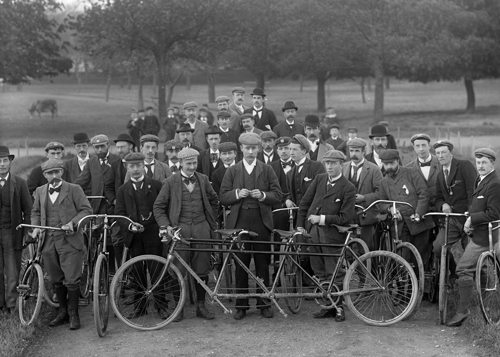Dublin News: ‘Bicycle week’ fails to attract big turnout in one of the world’s great cycling centres
Dublin, 30 May 1923 - Despite bicycles being used extensively for the purposes of business and leisure in the city, Dubliners have shown little enthusiasm for events organised around ‘Bicycle Week.’
Last night, only 423 people turned up for a public meeting at St. Stephen’s Green. This was followed by a spin out to the southern suburbs to demonstrate the utility of the bicycle. Leading the entourage of cyclists was Mr. R. Phillips Rogers, Secretary for ‘Bicycle Week’ in the Irish Free State, and Mr. J.F. Walsh, holder of a long distance cycling record. During the demonstration the cyclists moved two abreast and showcased not only modern models, but also some of the old-style ‘bone-shakers.’
A similar meet-up is planned for later this week with a cycling tour of the suburbs on the city’s northside and the organisers are hopeful for a much larger number of participants.
British Pathé footage from ‘National Bicycle Week’ in London, 1923 National bicycle week
While the events of ‘Bicycle Week’ are intended to highlight the great usefulness of the bicycle, a luncheon gathering organised by the Dublin Rotary Club heard Dublin described this week as one of the greatest cycling centres in the world.
Mr. T.W. Murphy, assistant editor of the Motor News and Irish Cyclist, said that with the possible exception of Copenhagen, he had not been to any city where the bicycle was in more daily use than Dublin. It was, he said, used by all classes and visitors to Dublin were alway struck by the large stream of cyclists on the streets.
Cycling, he added, was both a sport and a cheap means of locomotion, which was introduced in the same year as the tramway - 1870. Mr. Murphy’s talk was arranged to coincide with ‘Bicycle Week’ and similar campaigns have also been held throughout Great Britain to popularise the use of the bicycle.
[Editor's note: This is an article from Century Ireland, a fortnightly online newspaper, written from the perspective of a journalist 100 years ago, based on news reports of the time.]





















